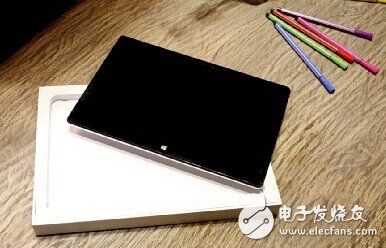"On track", when asked about the completion of Intel's plan to ship 40 million tablet PCs in 2014, Hong Li, director of industrial chain marketing at Intel China, used this somewhat vague English phrase with a complex expression, translated as " In progress as planned or "on the right track." His look seems to have confirmed some speculations from the outside world: Although Intel's investment in the mobile field is obvious, and more and more results are emerging, it is far from enough to restore Intel's security. After all, compared to the era of unified PCs and lakes, Intel is still far behind competitors such as Qualcomm in the mobile field of the mobile era.
Want to borrow a personal tablet to break through
About two years ago, Intel, which was behind the mobile side, focused its attention on Shenzhen, a magical land full of cottage flavor and full of innovation and vitality. “Whether it is PC or tablet, the horizontal division of labor in the industry is very active. After a trend emerges, the Shenzhen industrial chain will quickly begin to 'democratize' it – lowering costs to the mass market and pushing it to the mass market.†Said, "This is a very unique place in the Shenzhen industrial chain."
Intel has always focused its mobile strategy on tablets that are affordable, so the main partners are small and medium-sized businesses. Intel hopes that these partners with the ability to innovate and have a good middle and low-end market experience will quickly build a solid market for the mobile space. In the past two years, Intel began to learn to put down the "giant body" and tried to match the Chinese tablet and accessories manufacturers such as Cool Cube, Onda, and Microstep Electronics in Shenzhen to adapt to their speed and way of doing things.

In order to support the ecology of the flat panel industry in Shenzhen, Intel proposed six strategies: including the “Himalaya†training program, and helping to develop a better price-balance plan and other comprehensive assistance programs. In accordance with this "six major strategies", a large number of blood transfusions and "turnkey" assistance were provided to small and medium-sized partners concentrated in Shenzhen. Through agents, Intel subsidizes up to $30 for each Atom tablet chip. The low-end Z2520, the previous motherboard was $19.9. It is now free to the manufacturer, and the high-end Z3735 is priced at $22, but after subsidies. Basically equal to free. It can be seen that not only is technical support, but Intel is also investing in training partners. In their view, this is a bit like the PC market 20 years ago, and perhaps a new "new association" can be cultivated in Shenzhen.
Intel has set the target for tablet shipments this year at 40 million units, which is three times the figure in 2013. According to the reporter, in the first half of this year, Intel's global market has shipped a total of 15 million tablets with Intel processors. Intel China Marketing Director Zhang Yi publicly stated that Intel will launch a strong propaganda campaign with the cooperative manufacturers in the upcoming September school season; other promotional nodes such as National Day, Christmas at the end of the year, New Year's Day, etc. will also be active. Put in and drive sales with your partners.
The situation is still urgent
40 million units is not a small leap for Intel, but it does not mean that it can be a firm foothold.
According to IDC statistics, about 990,000 tablets were sold worldwide in the first half of 2014. That is to say, even if Intel completes its established mission, its total market share in the world is only about 15%, which is basically the entire ARM camp against the crowd. Apple, the leader in the field, sold 16.4 million iPads in the first quarter. Intel's situation in the mobile space is still very serious.
According to IDC data, global tablet shipment growth will continue to slow in 2014, which is a “challenging year†for this market. The weak growth in global shipments will stimulate more direct and fierce competition among producers across the industry chain.
At the same time, the capabilities of Intel partners have also been questioned. For example, it has been pointed out that some downstream manufacturers of "cottage" have not effectively utilized the technical resources provided by Intel: Intel will provide a "public version" tablet design solution for processor products to help downstream manufacturers. Can quickly launch products to seize the market. However, many manufacturers will directly copy the solution, which makes the homogenization of tablet products equipped with Intel processors very serious.
At the new product launch conference of Intel on August 6, it was found that whether it is data comparison or live demonstration, Intel refers to the low-end competitors such as MTK, Ruixinwei and Quanzhi, and there is no strong Qualcomm or NVIDIA. The trace of the opponent. There are many people who think this may be some manifestation of Intel's lack of confidence.
In the Q2 earnings report released by Intel in mid-July, its mobile and communications group lost $1,124 million, an increase of about 48% year-on-year, which is a heavy burden on the company's performance figures. This data shows that although Intel continues to increase investment in the mobile field, the road to mobile break is still difficult.
FIRSTPOWER offers a full assortment of Industrial Batteries are built to last and deliver power when needed, thereby ensuring maximum life and optimum performance. Ideal for mobility, golf carts and a range of industrial applications such as walkers and stackers etc.
We welcome orders with "FirstPower" brand; We are also flexible to accept orders on OEM basis. Contact us now! Your partnership with FirstPower will prove worthy of it.
Industrial Battery,Rechargeable Industrial Use Batteries,Industrial Lithium Battery
Firstpower Tech. Co., Ltd. , https://www.firstpowersales.com
